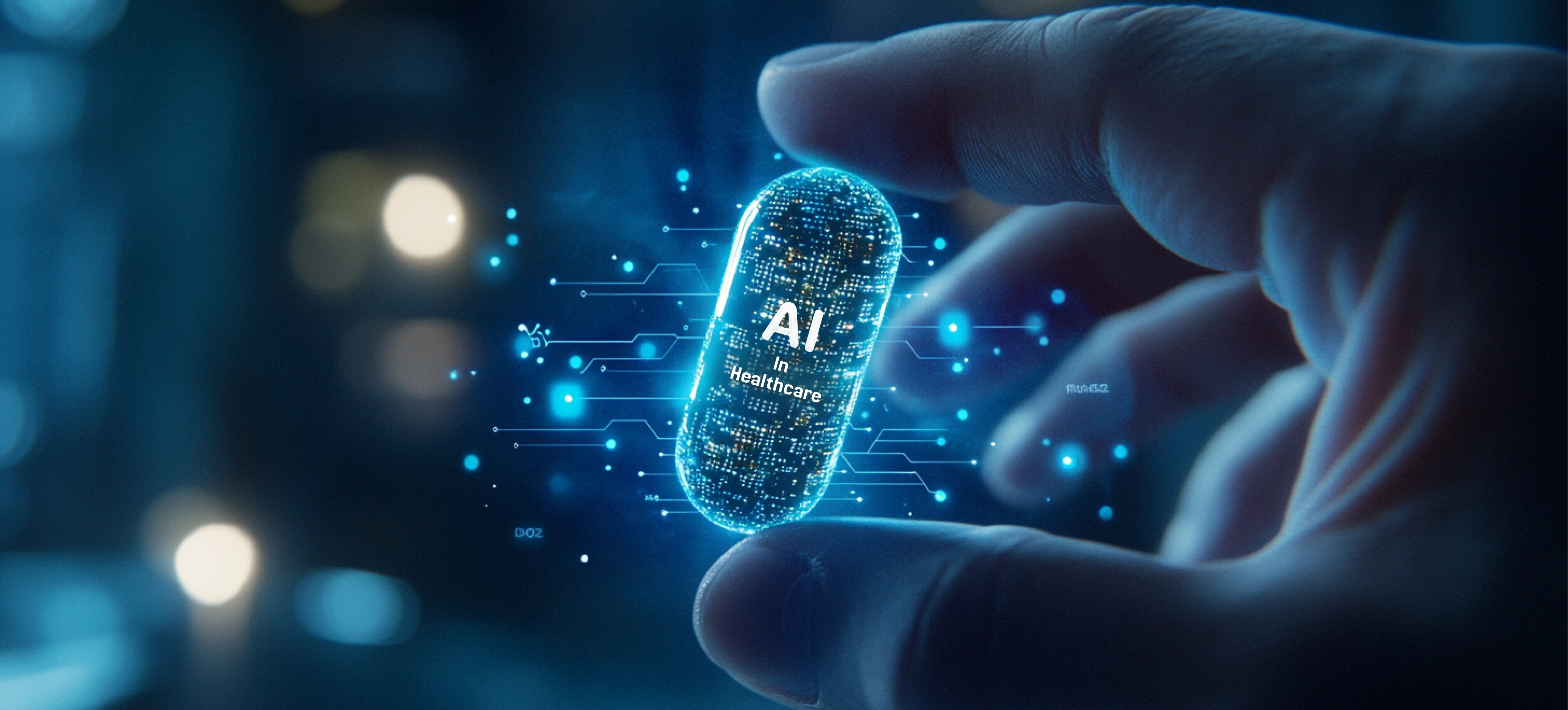In 1977, a microbe named Escherichia coli became a scientific celebrity. It was the first organism to have its DNA genetically modified, pioneering a revolution in biotechnology.
Fast forward to today. We’re no longer tinkering with DNA, we’re redesigning life itself. Thanks to the partnership between AI and synthetic biology, the once-unimaginable has become reality.
This scene of a biotech lab would not come as a surprise – On one side, researchers are culturing bacteria engineered to produce biofuels. On another side, algorithms analyze terabytes of genetic data, predicting how to edit DNA to create drought-resistant crops or life-saving antibiotics. This is the convergence of two worlds – biology as the canvas, and AI as the artist.
But here’s where this subject gets complicated. Just as E. coli sparked debates about bioethics decades ago, today’s advances force us to ask controversial questions – Are we wielding this power responsibly? Or are we racing to commercialize life without fully understanding the risks?

AI And Synthetic Biology
From the Lab to the Realities of Transformation
In 2022, Australian startup Samsara Eco used synthetic biology to develop plastic-eating enzymes, enabling infinite recycling of plastics. Backed by the Australian National University and venture fund Main Sequence, it gained major support, including a partnership with Woolworths Group to recycle 5,000 tonnes of plastic.
This is a glimpse into the transformative potential of AI in synthetic biology across industries.
1. Pharmaceuticals – Reinventing the Race for Cures
Picture a pharmaceutical executive staring at a whiteboard filled with failed drug ideas. Then, an AI-powered platform identifies how to engineer microbes to produce a compound that works. Suddenly, a pipeline once riddled with dead ends becomes a goldmine.
But pharmaceuticals is all about stakes. The ability to design life-saving drugs faster is a game-changer, but who gets access? Will these breakthroughs remain sealed behind high paywalls?
2. Agriculture – The Promise of Super Crops
A farmer in a drought-stricken region plants bioengineered seeds designed to thrive in harsh conditions. Months later, the yield doubles. The farmer’s livelihood is saved, and their community thrives.
The flipside? Those seeds come with patents. What happens when farmers must rely on biotech companies year after year, unable to save their own seeds for replanting?
3. Climate Tech – Engineering a Planet-Saving Solution
A group of scientists develops algae that captures carbon dioxide and converts it into biofuels. Headlines celebrate the innovation as a “climate savior.”
Yet, beneath the surface, skeptics ask : Are these solutions scalable, or are we simply putting a green gloss on an unsustainable system?

Engineering a Planet-Saving Solution
Vision, Profit, and Responsibility For Business Leaders
Visionary leaders cannot marinate in the thrill of innovation anymore. It’s time to make decisions that will ripple across industries, economies, and ecosystems.
Imagine sitting in a boardroom, reviewing a proposal to invest in AI-driven synthetic biology. The spreadsheets are compelling, accelerated product timelines, reduced R&D costs, and untapped markets waiting to be disrupted. But as you approve the plan, a thought lingers, ‘What legacy are we creating?’.
Here’s the truth : when you program life, you also program consequences. Engineered organisms could clean oceans, cure diseases, and feed billions. But they could also disrupt ecosystems, widen inequalities, and spark regulatory chaos.
Rewriting the Future
The marriage of AI and synthetic biology is a controversial technological revolution. But one thing is for sure, it’s the next chapter in humanity’s story. Now the question is, ‘Who gets to write it?’
Decades from now, will we look back on this era as the moment we solved global challenges and unlocked new economic value? Or will it be the cautionary tale of how we let profit blind us to the risks of playing with nature’s code?
For business leaders, the choices made today will shape that story. Acting boldly and innovatively is essential, but so is asking the hard questions :
Are we using this power to uplift humanity or to corner markets?
Are we solving real problems or creating new ones in disguise?
In the end, the legacy of AI in synthetic biology will be written in the ecosystems we engineer, the industries we transform, and the lives we impact. It’s established that the future isn’t just being programmed, it’s being designed for profit. But will we wield that design wisely?
Let’s help you write this chapter responsibly. Connect with our experts who can guide your organization in harnessing AI and synthetic biology for innovation that matters.
Frequently Asked Questions
1. How is AI used in synthetic biology?
AI models genes, predicts protein folding, and designs DNA in silico, slashing costly lab iterations.
2. What are the applications of AI in biotechnology?
It accelerates drug, enzyme, and vaccine discovery, precision farming, and custom therapeutics.
3. Can AI design new forms of life?
AI drafts synthetic DNA and gene circuits; scientists still build and test the organisms.
4. Why is synthetic biology important?
Reprogrammed cells yield faster vaccines, eco-friendly materials, and high-yield crops – advancing health and sustainability.
5. What are the ethical concerns surrounding AI in synthetic biology?
Risks include weaponizable organisms, ecosystem harm, IP disputes, and unknown long-term effects.



